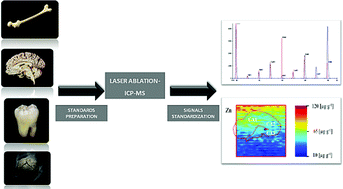Current approaches to calibration of LA-ICP-MS analysis
Abstract
For solid sample quantitative analyses by laser ablation inductively coupled plasma mass spectrometry (LA-ICP-MS), the main analytical problem is the calibration step: evaluation of the function (equation) that correlates the signal with the concentration of analytes in the sample. Except for basic standards preparation, problems result from non-stoichiometric effects during vaporization, transport of ablated aerosols, atomization, and ionization in the plasma. These effects, called elemental fractionation, are mainly sample matrix dependent and thus suggest that standards used for calibration should accurately match the sample matrix. Preparation of such standards is a difficult and time-consuming process, so since the beginning of LA-ICP-MS applications for quantification of solid sample composition, different approaches have been developed to solve the problem, primarily complete matrix matching. Because the calibration of LA-ICP-MS is a key factor for its quantification capabilities, this review summarizes recent calibration approaches and related standards preparation techniques for the analysis of various solid materials by LA-ICP-MS. Selected papers concern the application of reference glasses, solution based standards, synthetic standards based on the main sample matrix component or powdered matrix certified reference materials, matrix-matched standards based on spiked sample materials, and non-matrix-matched standards, for calibration. Isotope dilution methods and signal normalization protocols used in order to improve precision are also considered.


 Please wait while we load your content...
Please wait while we load your content...